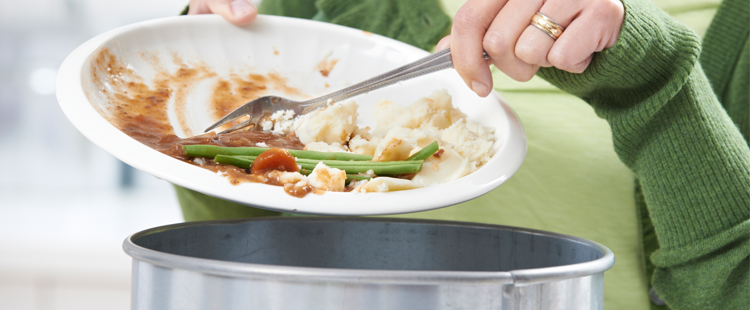From both a financial standing and an environmental one, it is in every company’s best interests to reduce their waste. With disposable catering supplies retailer Inn Supplies, we explore the level of food waste produces by the food and drink sector, as well as methods of reduction.
Food waste from restaurants
£682 million is thrown away every year by restaurants in the form of food waste. Responsible for creating 22% of the Hospitality and Food Service industry’s waste, restaurants produce 915,400 tonnes of waste, including 199,100 tonnes of food waste. Businesses are currently losing 97p from each meal they serve in avoidable food waste.
No restaurant, big or small, can really afford such a loss every meal. Take a pub restaurant for example: according to data from How To Run A Pub, the average spend on a three-course pub meal is £14.48. 6% of this amount (97p) is immediately stripped from this total to account for avoidable food waste, before overheads like wages, utilities and maintenance are removed.
Restaurants are leading the way with recycling, as their rates are particularly high. Over half (51%) of all waste from restaurants is recycled, with 65% of packaging and other wastes recycled. Clearly then, for restaurants to minimise the impact on their bottom line, they need to implement efficiencies — especially when it comes to waste management and disposal. But is this easier said than done?
What consumers have to say on the matter
It’s important to understand your customers in order to find the best way to reduce food waste. One survey found that more than a quarter of diners (27%) left food on their plate when dining out. Generally, it seems that diners are comfortable with this, as three fifths said doing so was not concerning.
Plates were most frequently left with chips on (32%). Vegetables — such as peas and salad garnishes — followed in second place (18%). So why are customers leaving food uneaten? Overwhelmingly, 41% said that they did so because the portions were too big. Other factors can also have an influence. The number of courses ordered can influence how much food is left; diners may, for example, leave more of their main course if they have ordered a dessert. Who we dine with can also influence how much we eat; if we are comfortable with our company, we will usually eat more than what we would in a professional situation.
Methods of reduction
It would be ludicrous to demand customer to clear their plates! This means it is a restaurant’s responsibility to do all they can to reduce the waste their business produces. It can be difficult to know where to start, so here are a few pointers:
- Push staff to offer takeouts — 42% of people said asking for a doggy bag is embarrassing, yet 74% said they don’t might being offered a carton to take leftovers home with them. Train your staff to ask customers who have a lot of food left on their plate whether they want to take it home with them.
- Offer flexibility with your menu — allow diners the option to change the sides served with a particular dish. If customers are not able to change their sides, they may order additional items separately, meaning they will leave more of the original dish. Some restauranteurs may encourage this to boost revenue generation, but it’s important to remember that increased food waste may lead to greater costs, essentially neutralising the aim of this strategy.
- Cater to different levels of hunger — not all diners will want a huge meal — what about those popping in for a sandwich at lunchtime, for example? Cater for all by including lighter options on your menu, and naturally reduce the cost accordingly.
At first, such small savings might not seem worthwhile per plate. But in a competitive industry with rising costs, any threat to your bottom line needs to be dealt with as a priority.


